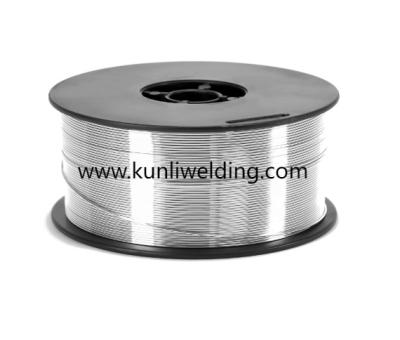Categories
Tags
-
#Aluminum Welding Wire ER5087
#Aluminum Welding Wire Manufacturers
#Kunliwelding Aluminum Welding Wire
#Aluminum Alloy Welding Wire Suppliers
#Aluminum Alloy Welding Wire
#Kunliwelding Aluminum Alloy Welding Wire
#Aluminum Welding Wire ER4943
#China Aluminum Alloy Wire Manufacturers
#Aluminum Mig Wire Manufacturers
#Aluminum Mig Wire
#Kunliwelding Aluminum Mig Wire
#Aluminum Welding Wire
Archives
Smart Bulk Buying Practices For Aluminum Welding Wire And Inven
-
Posted by Jason Robby Filed in Technology #Aluminum Alloy Welding Wire Suppliers #Aluminum Alloy Welding Wire #Kunliwelding Aluminum Alloy Welding Wire 645 views
When fabrication shops plan large procurements, creating a procurement strategy that balances cost and continuity is essential. Working with Aluminum Alloy Welding Wire Suppliers who understand volume needs and production rhythms unlocks savings and reduces interruption risk. Recent fluctuations in global logistics and evolving demand from sectors like mobility and energy mean buyers who prepare intelligently gain a practical advantage: lower per unit cost coupled with steadier deliveries and clearer quality records.
Start with clarity on specification and forecast. Suppliers respond better when technical requirements and expected consumption are communicated early. Share anticipated monthly or quarterly volumes during inquiry so manufacturers can propose tiered pricing and production windows. Clear forecasts often translate into prioritized production slots and more competitive quotes. When lead times tighten, firms that have provided sightlines into future demand find it easier to negotiate flexible shipment plans.
Leverage sampling and staged qualification. Before committing to a large buy, secure sample reels from the lot proposed for mass production. Run weld trials under real shop conditions and verify parameter sets. Successful trials reduce the chance that large orders will trigger rework when they reach the line. Suppliers that support trial spools and provide batch documentation demonstrate confidence in their process, and buyers who verify performance protect themselves from downstream costs.
Think beyond unit price. Total cost of ownership includes packaging, freight handling, customs, and waste from leftover spool lengths. Discuss spool formats that minimize onsite handling and reduce scrap, such as compact reels for manual work and continuous spools for automated cells. Suppliers able to adjust packaging to match handling equipment make it cheaper to move wire from receiving to weld stations and cut handling incidents that slow production.
Negotiate flexible payment and delivery terms. Options such as staged payments aligned with shipments, consigned inventory, or call off arrangements reduce capital tied up in stock while keeping material at ready locations. When possible, include clauses for emergency replenishment at known rates so teams avoid the high cost of last minute freight. Clear terms reduce friction and protect both parties when schedules fluctuate.
Verify quality systems and documentation before large orders ship. Request lot level chemical reports and surface inspection records so your team can link weld trials to production spools. Traceability makes troubleshooting faster and supports audits for regulated projects. Suppliers that keep retained samples and publish test records reduce the risk buyers face when scaling from prototypes to series production.
Build supplier relationships that include technical support. Application assistance, recommended parameter libraries, and on site commissioning support shorten qualification cycles and improve first pass yield. When suppliers step into a collaborative role, they become partners who help tune production rather than distant vendors who only ship spools.
Consider regional warehousing and logistics alternatives. When global routes are stressed, local hubs and cross dock options reduce exposure to transit delays. Many suppliers can place buffer stock closer to key facilities on behalf of buyers, enabling rapid replenishment without heavy inventory carrying costs. These arrangements often come with reporting dashboards that provide visibility into stock levels and shipment status.
Include clauses for handling and returns to manage unexpected defects. Define acceptance criteria tied to batch numbers, and agree on clear steps for rejected material. This reduces dispute time and accelerates replacement shipments when real issues occur. Having a documented escalation path keeps production teams focused on welding rather than negotiation.
Finally, review the supplier's sustainability and reclaimed material practices if those matters align with corporate goals. Buyers increasingly value partners that can document environmental credentials and recycling pathways while maintaining material performance. Discussing these aspects in early talks often yields solutions that meet both procurement and sustainability targets.
For procurement teams ready to pursue robust supply arrangements and to explore product formats and documentation options, product information and contact channels are available at www.kunliwelding.com/product/aluminum-welding-wire/er5183-aluminum-welding-wire.html . The site offers product pages and application support contacts to help plan trials, packaging choices, and delivery arrangements that match production needs and procurement objectives.

I lost $935,000 in crypto trading platform after being promised 15% daily profits. It was a financial nightmare! I was extremely heartbroken when I realized I was... more
Aug 28- -
-
Report